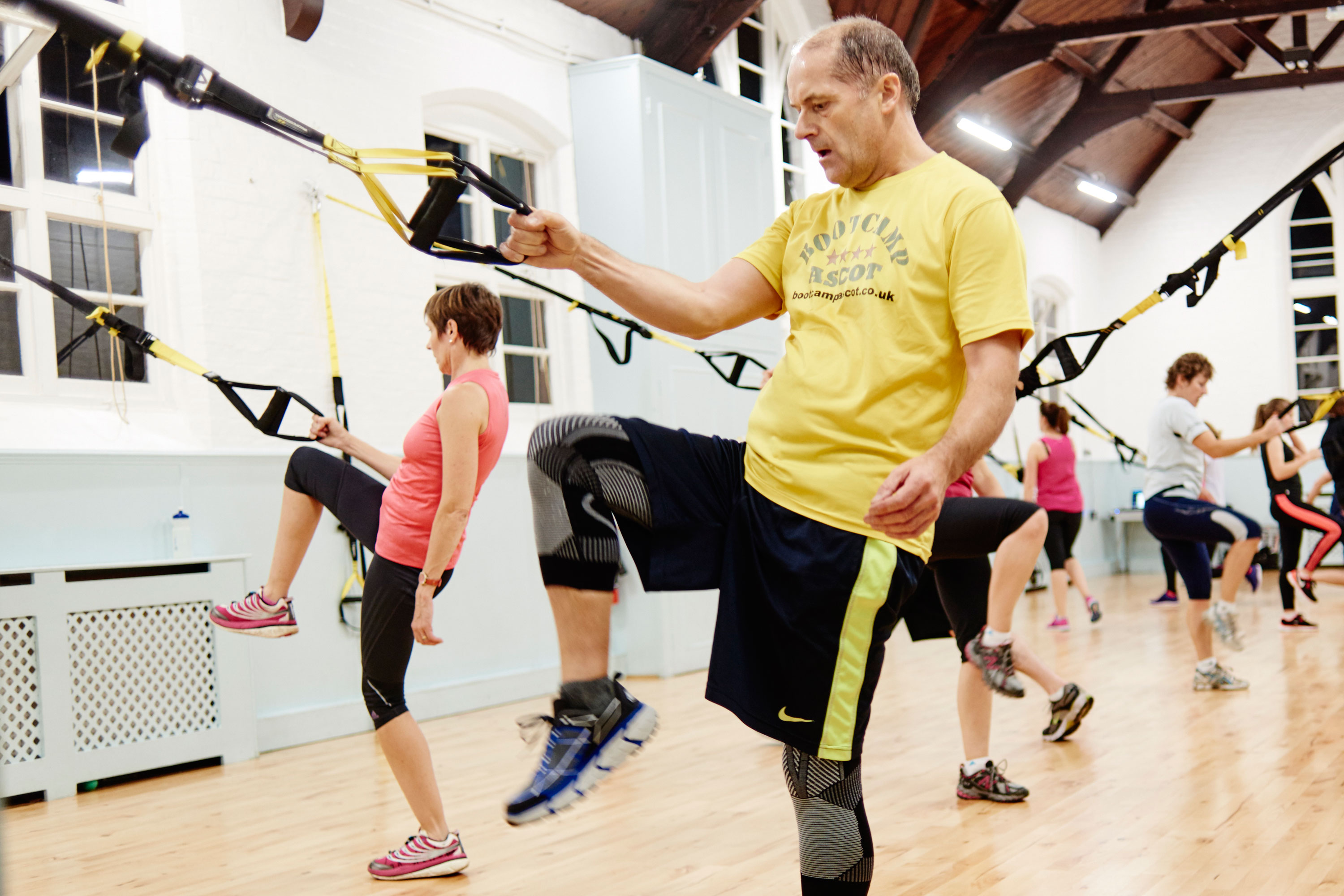
Profile
Dr Charles Walker
Age 58
Role GP partner at Runnymede Medical Practice and Level 3 Personal Trainer at BootCamp Ascot
Hours worked Nine GP sessions and leading four hour-long sessions at BootCamp Ascot per week
04.30
My alarm goes off. I dress in the dark and I’m out the door five minutes later for a run with an 8kg rucksack. I’m preparing for a 100-mile ultra-marathon in Tennessee in April.
05.30
I meet two personal training clients on Ascot racecourse for an hour’s session. Each session is tailored to the client’s goals – one is in training for Tough Guy (which claims to be the world’s most demanding one-day survival challenge) and the other for the police ‘bleep test’. Often we use suspension training straps anchored to the children’s swings. The twin straps (like car seat belts with foam handles) are versatile and help clients increase their strength using their own body weight.
During the session, we run up a slope at repeated intervals, trying to maintain the same speed despite fatigue. It’s starting to get light as we finish.
07.00
I run home for a shower, and have breakfast with the family, before driving the seven miles to the practice. I gather resistance bands, an agility ladder, hurdles, agility cones and two car tyres for tonight’s workout, in case I don’t get time to return home after surgery.
08.30
I have a tutorial with a GP registrar. I notice he seems distracted. He admits to finding it difficult to balance workload and family life while preparing for exams and updating his e-portfolio. In my running club sessions, I often pair up people with different levels of fitness to motivate each other, and decide to use a similar technique here. I recommend my registrar talks to our ex-GP registrar.
10.30
I do my paperwork, process results, answer telephone messages and sign prescriptions. I also have two hours of home visits. During the day, I check my emails and messages to gauge how many are expected at tonight’s forest workout. There’s good online banter happening between the BootCamp crowd.
15.00
I have a consultation with a depressed patient who is keen to lose weight, but lacks the confidence and motivation to exercise. She has declined exercise referral as she doesn’t want to go to a gym. I remind her of the exercise opportunities available locally that are outdoors, for free, with beautiful scenery.
Many patients know I’m a personal trainer and ask for advice on weight loss and diet, sports injuries and musculoskeletal problems. Some have tried BootCamp Ascot themselves.
I have no visits after surgery, so I get home to see the family for 20 minutes.
19.30
I drive to the forest workout. It’s dark and eight runners are waiting and chatting with their head torches on. There is a great atmosphere – the group know each other well. When I open the boot and get the tyres out, there is a big groan – it’s tough, but they love the challenge. We start on our five-mile run in the forest, interspersed with tractor tyre-flipping (the tyres acquired from a local farm) and car tyre-dragging (with ropes attached to each runner’s Velcro waist band). We include hill interval training, resistance band and bodyweight exercises, illuminated by the torches.
21.00
I go for a further three-mile run with one of the runners, who is embarking on his first ultra-marathon this year.
Being both a GP and a personal trainer can be useful – I recently assisted a runner who collapsed following a myocardial infarction during a marathon. It was very difficult to read his ECG when the paramedics arrived because he was hypothermic and shivering. He was airlifted to hospital.
In the last month, I also recognised a case of Lyme disease in one of our trail runners. He complained of protracted inflammation around the site of a bite, but had not realised it was a tick bite.
22.00
I head home. I go on Facebook before bed, to make contact with my BootCamp Ascot group, keeping them motivated.
Pulse October survey
Take our July 2025 survey to potentially win £1.000 worth of tokens















